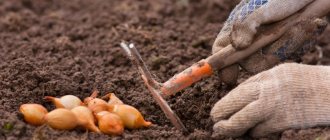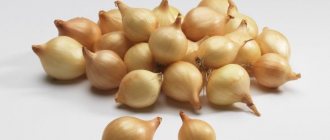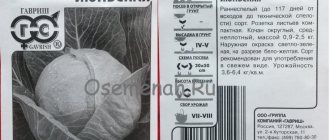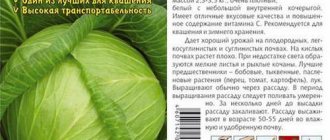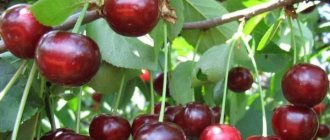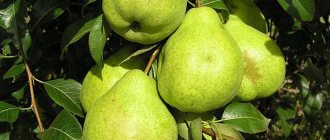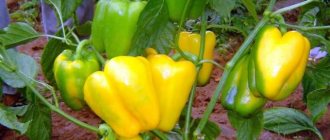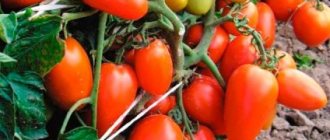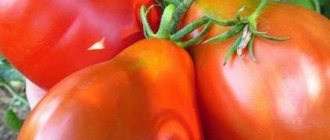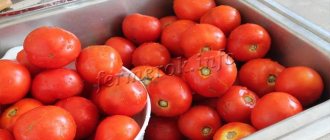The mid-early onion variety “Shetana MS”, created by breeders of the seed company Moravoseed (Czech Republic), is well known to amateur gardeners and professional farmers in Europe and post-Soviet countries; it has been listed in the State Register of Russia since 1998. It belongs to the semi-sharp type and is considered universal: both green feathers and juicy onions are used for food, which are perfect for fresh consumption, all processing options and long-term storage.
For turnips, onions “Shetana MS” (pictured) are grown in a two-year culture from sets, as well as in a one-year culture - by sowing seeds in open ground and for seedlings
"Shetana MS" is perfectly adapted to the climatic conditions of the Central and Middle Volga regions, where it is recommended for cultivation in open ground. It is successfully cultivated in Ukraine, Belarus and throughout our country in all types of greenhouses, greenhouses and under film covers. Intended for cultivation on subsidiary plots of land and in large farms, as it is suitable for commercial production with mechanized harvesting. In addition, ripe turnips have a high shelf life (90-92%) and are less susceptible to rotting and mold, which allows the harvested crop to be stored for a long time without loss of marketability and taste. These properties are also confirmed by domestic experts, recommending this vegetable for wide distribution for commercial purposes.
Description of the Shetana onion variety
Winter onion Shetana MS (MS - frost-resistant) was developed by Czech breeders for cultivation in open ground. When planting with sowings, the percentage of germination is higher than when sowing seeds.
Reference! Sets are one-year-old onions (small onions) grown from seeds. You can grow it yourself or buy it at a gardening store.
Entered into the State Register of the Russian Federation in 1998.
Origin and development
Onion cultivation began in Asia (Afghanistan and Iran) about 4 thousand years ago. A little later, they began to breed it in Egypt, Greece and India.
In Russia, the vegetable became known in the 12th century . Since then it has become widespread and is added to many dishes.
This is interesting! In Ancient Rome, they firmly believed that the bitter taste gave courage, energy and strength, so the legionnaires were given food that contained a lot of onions, and in Ancient Greece, beautiful onions were given as a gift to the gods - the plant was considered sacred.
Composition, vitamins and beneficial properties
The vegetable contains:
- saponins (complex organic compounds from plant glycosides);
- various sugars (glucose, fructose);
- pectins;
- iron;
- potassium;
- fluorine;
- vitamins (ascorbic acid, tocopherol);
- essential oils (give a pungent odor due to their high sulfur content).
The presence of iron helps prevent or treat anemia . Potassium strengthens the heart muscle, thereby normalizing heart function. Vitamins strengthen human immunity, and onions have antiseptic and antibacterial properties.
Ripening period
The onion variety Shetana belongs to the mid-early variety . When sowing seeds, ripeness occurs after 90 days, when planting with sets - after 60-70 days.
Productivity
The quantitative indicator is stable, from Q1. m harvest up to 5 kg of fruits . The safety of the bulbs is at a high level; they are stored for a long time in a dry and cool room without losing their presentation or taste.
Disease resistance
The culture is characterized by increased immunity to diseases . Even when bred in a humid climate, it is not affected by bacterial rot. The variety is resistant to fusarium rot, but susceptible to downy mildew.
Reference! Downy mildew (downy mildew) is a fungal disease that spreads to any part of the plant.
Characteristics of the bulb
The shape is round, the color is yellow, closer to straw, the neck is of medium thickness . The average weight is 70-90 g, all fruits are aligned, almost the same size. The taste is semi-sharp, the flesh is white, juicy.
In cooking, the use of the vegetable is universal : it is consumed fresh, added to salads and hot dishes. Onions are used for marinades, canning, baking and drying.
This is interesting:
How to eat onions for weight loss: recipes for dietary dishes
Garlic peel: beneficial properties and methods of use
Climate requirements
The variety is recommended for breeding in the central and southern regions of our country, although it is successfully grown in all latitudes.
The photo shows the onion set of Shetan MS.
general characteristics
Shetana is considered a mid-early variety. If onions are grown from seeds, then their growing season is approximately 90–100 days. If from sets – 70–80 days. Czech breeders developed the Shetan onion variety.
The bulbs are beautifully round in shape with medium-density pulp. Their weight is about 45 grams when grown from seeds and 85 grams when planted as sets. The scales of the Shetana variety are straw-yellow in color, and the neck is of medium thickness. The pulp is white, with a semi-sharp taste. The dry matter content in it is 12%, sugar content is 6.3%.
This onion is suitable for both cooking and canning.
Main advantages and disadvantages
The positive characteristics of culture include:
- possibility of growing from seeds or sevkom;
- average ripening time;
- frost resistance;
- unpretentious care;
- high productivity;
- presentation of the fruit;
- long shelf life;
- long transportation;
- breeding opportunity for sale.
The negative side is considered to be weak resistance to downy mildew.
What is the difference from other varieties
The main difference between Shetana and other varieties is that the crop is not prone to bolting . Onions that are harvested do not produce a good harvest, and the fruits quickly deteriorate during storage.
Features of planting and care
The ability to grow a variety in two ways increases demand among gardeners. The culture is propagated through seedlings and direct planting of onion sets in the ground .
Preparing for landing
Before sowing the seed, the grains are carefully inspected and only large, light-colored and without visible damage are selected. Then the seed material is disinfected in a weak solution of potassium permanganate for 20 minutes, after which it is placed in growth stimulants to improve germination. The drug “Zircon” is used as a stimulant.
The onion sets must be thoroughly dried and then heated . It is kept at a temperature of 20°C for two weeks, and then heated for 8 hours at a temperature of +30-35°C.
Important! High temperature activates the growth process.
For planting, select no more than 2 cm in diameter , since large bulbs germinate more slowly.
Soil requirements
To prepare the soil, use garden soil, fine washed river sand, peat and humus in equal quantities. River sand acts as a leavening agent, and peat and humus saturate the soil with additional nutrients.
After mixing all the components, the resulting mixture is poured with a hot solution of manganese or steamed in the oven at a temperature of 50°C for 15 minutes for disinfection.
Dates, scheme and rules of planting
Planting dates depend on weather conditions : in warm weather, the seedlings are planted in late April - early May. By this time the soil should warm up to 13-14°C. Late sowing will affect the yield, and sowing in cold weather will lead to the formation of flowers.
Material selection
Before planting, material is selected that will ensure a rich harvest. For sowing, medium-sized bulbs are used. They should not show signs of mechanical damage or rot. Smooth, identical onions are placed in a warm place. The seeds are soaked in warm liquid and then dried.
Planting in the ground occurs in mid-spring - April, and continues until early May. There should be enough space between the rows - from 10 to 15 cm. To get a turnip, at least 6 cm of soil is kept between the bulbs. This is necessary so that the culture does not need free space.
It is best to buy “Shetana” onion sets and seeds in specialized seed stores. When purchasing seedlings, you need to consider the following:
- the bulbs must have varietal characteristics - straw-colored husk and white pulp;
- It is recommended to smell the onion set - it should smell like onion, and if there is a smell of mold, it is better to refuse the purchase;
- the planting material must be well dried and free of moisture - such onions rustle when sorted;
- You should not buy this seed during frosts - frozen seed will rot after thawing and will not be suitable for planting;
- You should not take onion sets with pecked leaves if you do not plan to plant them in the near future; it should also not have roots or cut sprouts;
- The best planting material is considered to be bulbs with a diameter of 1-2 cm;
- There should be no stains, damage or suspicious deposits on the planting material.
If there is still a lot of time before planting, the seeds should be dried and stored in fabric or paper bags at a temperature of 10-15°C and a humidity of 70-75%. Hatched bulbs are stored in the refrigerator before planting in the ground.
When purchasing onion seeds, you need to pay attention to the expiration date. If it expires during the planting period, then no more than 30% of the seeds will be able to sprout. It should also be noted that onion seeds lose their viability 3-4 years after collection.
There are 200-250 pieces in 1 gram of onion seeds.
Features of cultivation
Onion beds are chosen in a sunny place with loamy soil . In case of increased acidity, the soil is neutralized with slaked lime or dolomite flour. Check the acidity of the soil using a litmus indicator.
Dissolve a little soil in a glass of water and dip litmus paper into the mixture. If the indicator turns red, it means the soil is acidic; if the color is green, the soil reaction is within normal limits.
Watering mode
Water moderately, when the top soil layer dries out , no more than twice a week. When the fruit is forming, watering is increased, but the level of humidity in the beds is controlled. Water at the root in the morning or evening. Two weeks before harvest, watering is stopped.
Loosening and weeding
Loosen the beds after each watering and remove weeds with roots . By filling the rows, weeds interfere with the penetration of light, which negatively affects the formation of bulbs. Weeds also take nutrients from the ground that are necessary for the full development of seedlings.
Feeding
During the entire growing season, the crop is fed three times. The first nitrogen fertilizing is applied two weeks after germination. Nitrogen is necessary for the growth of green mass.
The second time is fed two weeks after the first feeding. Organic matter is used as fertilizer, for example: bird droppings, mullein solution or urea in a ratio of 1:15.
The third feeding is applied at the time of fruit formation . A mineral complex with a predominant content of phosphorus and potassium is used.
Pest and disease control
Most often, plant diseases arise due to improper care , that is, failure to comply with agricultural practices and crop rotation rules. Shetana is susceptible to downy mildew, which appears with high humidity and sudden changes in temperature.
When sprayed with fungicidal preparations, onion feathers cannot be eaten , so gardeners use traditional methods to combat the disease. Among the most effective methods is treating plants with whey in a ratio of 1:10. Serum bacteria are safe for humans, but harmful to fungus.
Among the pests, the onion fly is dangerous , but not the mature individual, but its larvae, which penetrate the soil and destroy the upper part of the onion.
An effective measure in combating the pest is treating plants with sharp-smelling decoctions of mint, valerian or pine needles.
Video
The opinions of experienced gardeners about the features and characteristics of popular onion varieties, including Shetana MS, as well as about various methods of combating downy mildew, can be found in the following videos:
About the author:
Found a mistake? Select the text with the mouse and click:
Ctrl + Enter
Do you know that:
Humus is rotted manure or bird droppings. It is prepared like this: the manure is piled up in a heap or pile, layered with sawdust, peat and garden soil. The pile is covered with film to stabilize temperature and humidity (this is necessary to increase the activity of microorganisms). The fertilizer “ripens” within 2-5 years, depending on external conditions and the composition of the feedstock. The output is a loose, homogeneous mass with a pleasant smell of fresh earth.
Harvest and storage
Harvesting begins in early August, when the tops fall to the ground . The best time to collect fruits is dry days. The bulbs are dug out of the ground with a shovel or pitchfork, and then left in the sun to dry. After drying, the onion feathers are trimmed so that the length of the neck remains at least 5 cm.
Shetan MS onion retains its presentation for a long time . When properly stored in a dry and cool room (at a temperature of 16-20°C), the bulbs do not spoil all winter.
Productivity
The yield of the Shetana variety is stable, 5 kg per square meter. The bulbs are perfectly stored for a long period, maintaining both their presentation and taste.
The bulbous fruits are uniform in shape and almost all of them ripen. The weight of one turnip reaches 90 g.
Shetan bulbs are used fresh, in salads, and in various culinary dishes. It is pickled, canned, baked, dried.
Reviews and advice from experienced gardeners
To avoid fungal diseases, experienced gardeners advise feeding onion plantings with an infusion of weeds, placing the beds only on the sunny side and not sowing the seed too thickly.
Reference! To prepare an infusion from weeds, pour boiling water over the grass and leave for four days.
Gardeners familiar with Shetana readily express their opinions about this variety.
Peter, Samara : “I’ve been planting this variety for more than one year. I sow sevkom, which I buy from the manufacturer. The bulbs are a pleasant yellow color, not quite large, but they suit me quite well. The taste is also wonderful, not spicy, not bitter, everything in moderation. It’s easy to care for, and the fact that the variety is frost-resistant is a big plus.”
Ekaterina, Sverdlovsk region : “Very good, large onions grow from the sets. I store it in a bag, in a dry place at a temperature of 18°C. The bulbs last a long time, until the new planting season. Great for salads and any preserves.”
